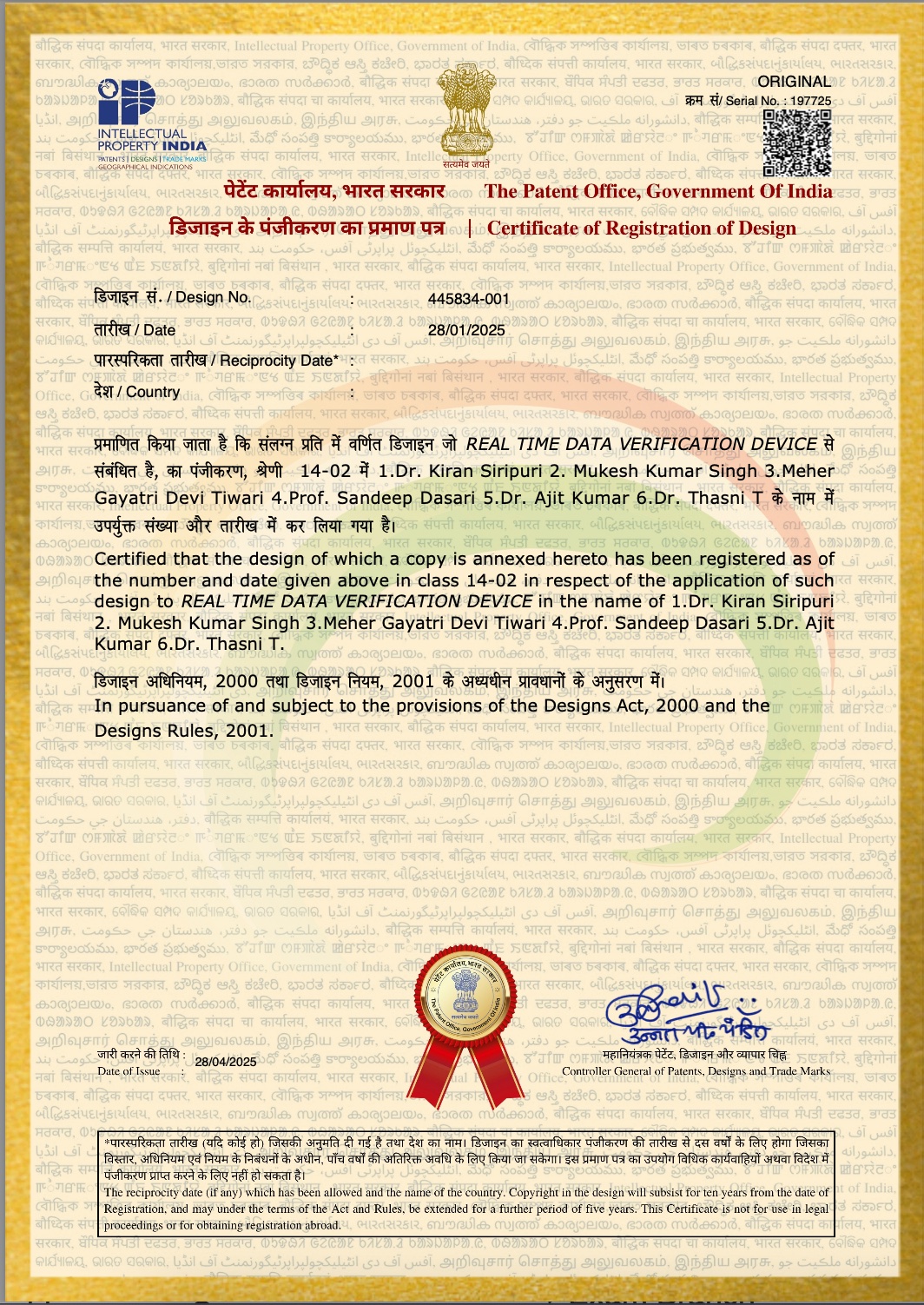Seung Gi Seo, Jinheon Jeong, Seung Yeob Kim, Ajit Kumar, Sung Hun Jin, “Reversible and controllable threshold voltage modulation for n-channel MoS2 and p-channel MoTe2 field-effect transistors via multiple counter doping with ODTS/poly-L-lysine charge enhancers”, https://doi.org/10.1007/s12274-021-3523-8, Nano Research, 14, 3214–3227 (2021), (I.F = 9.9, citations=14)
Neeraj Panwar, Pankaj Kumbhare, Ajit K Singh, N Venkataramani, Udayan Ganguly, “Effect of Morphological Change on Unipolar and Bipolar Switching Characteristics in Pr0.7Ca0.3MnO3 Based RRAM”, https://doi.org/10.1557/opl.2015.192, MRS Online Proceedings Library 1729, 47–52 (2014), (I.F = 1.9, citations=12)
Mokurala Krishnaiah, Ajit Kumar, Jun young Song, Sung Hun Jin, “Cu/(Co-Sn) ratio effects on physical and photodetection properties for visible light absorbing Cu2CoSnS4 nanoparticles via a one-pot hydrothermal process”, https://doi.org/10.1016/j.jallcom.2020.156174, Journal of Alloys and Compounds 847 (2020) 156174 (I.F = 6.371, citations=13)
Mokurala Krishnaiah, Md. Mohibul Islam Khan, Ajit Kumar, Sung Hun Jin “Impact of CsI concentration, relative humidity, and annealing temperature on lead-free Cs2SnI6 perovskites: Toward visible light photodetectors application”, https://doi.org/10.1016/j.matlet.2020.127675, Materials Letters 269 (2020) 127675 (I.F = 3.54, citations=19)
Mokurala Krishnaiah, Ajit Kumar, Ajay K. Kushwaha, Junyoung Song, Sung Hun Jin, “Thickness dependent photodetection properties of solution-processed CuI films: Towards cost-effective flexible visible photodetectors”, https://doi.org/10.1016/j.matlet.2021.130815, Materials Letters, 305 130815, (2021), (I.F = 3.574, citations=11)
Mokurala Krishnaiah, Ajit Kumar, Dhananjay Mishra, Ajay Kumar Kushwaha, Sung Hun Jin, Jong Tae Park “Solution-processed CuI films towards flexible visible-photodetectors: Role of annealing temperature on Cu/I ratio and photodetective properties”, https://doi.org/10.1016/j.jallcom.2021.161326, Journal of Alloys and Compounds, 887 161326, (2021), (I.F = 6.371, citations=23)
Mokurala Krishnaiah, Ajit Kumar, Dhananjay Mishra, Niraj Kumar, Junyoung Song, Sung Hun Jin “Process ambient effects on amorphous phase control of Sn-doped CuI films: Towards flexible transparent photodetector application” https://doi.org/10.1016/j.matlet.2023.134112, Materials Letters, 340, 134112, (2023), (I.F= 3.574, citations=4)
Mokurala Krishnaiah*, Ajit Kumar*, Dhananjay Mishra, Hyeon-Bin Jo, Geun Lee, and Sung Hun Jin* “Process Ambient Effects on Defect State Generation in CuI Films: Toward Multimodal Sensor Application via Patternable CuI Arrays” https://doi.org/10.1016/j.apsusc.2023.157251, Applied Surface Science, 626, 157251, (2023), (I.F=7.392, citations=5)
Mokurala Krishnaiah, Ajit Kumar, and Sung Hun Jin “Metal Work Function Effects on the Performance of UV-Visible-NIR Cs2SnI6 Photodetectors for Flexible Broadband Application”, https://doi.org/10.1002/pssr.202300107, Phys. Status Solidi RRL, 2300107 (2023), (I.F=3.277, citations=2)
Dhananjay Mishra, Krishnaiah Mokurala, Ajit Kumar, Seung Gi Seo, Hyeon Bin Jo, Sung Hun Jin, “Light-Mediated Multi-Level Flexible Copper Iodide Resistive Random Access Memory for Forming- Free, Ultra-Low Power Data Storage Application” https://doi.org/10.1002/adfm.202211022, Advanced Functional Materials, 2211022, (2022), (I.F= 19.924, citations=29)
Mokurala Krishnaiah, Seungyeob Kim, Ajit Kumar, Dhananjay Mishra, Seung Gi Seo, Sung Hun Jin, “Physically Detachable and Operationally Stable Cs2SnI6 Photodetector Arrays Integrated with ?-LEDs for Broadband Flexible Optical System” https://doi.org/10.1002/adma.202109673, Advanced Materials, 2109673, 2022, (I.F= 32.086, citations=44)
Bidyashakti Dash, Ajit Kumar, Han Min Kim, Seo Young Cho, Sung Hun Jin, “Physically Dissoluble Cesium Iodide-Based Resistive Switching Memory for Self-Vanishing Security Application”, https://doi.org/10.1021/acsami.5c00862, ACS Applied Materials & Interfaces, 2025 (I.F=8.5)
Ajit Kumar, M Krishnaiah, D Mishra, SH Jin, “Thickness dependent resistive switching behaviours in Ta2O5 layer at low temperature: Towards flexible, invisible, cryo-electronic applications in aerospace”, https://doi.org/10.1016/j.matlet.2022.132272, Materials Letters, 319, (2022) 132272. (I.F=3.574, citations=3)
Ajit Kumar, Mokurala Krishnaiah, D Mishra, H Jo, SH Jin, “Role of IGZO thickness for oxygen reservoir control in stacked IGZO/ZrOx layers: Towards reliable, uniform performance of flexible random-access memories” https://doi.org/10.1016/j.jallcom.2022.166199, Journal of Alloys and Compounds, 922, 166199 (impact factor (I.F)= 6.371, citations=15)
Ajit Kumar, Mokurala Krishnaiah, Jinwoo Park, Dhananjay Mishra, Bidyashakti Dash, Hyeon-Bin Jo, Geun Lee, Sangwook Youn, Hyungjin Kim, Sung Hun Jin. “Multibit, Lead-Free Cs2SnI6 Resistive Random Access Memory with Self-Compliance for Improved Accuracy in Binary Neural Network Application” https://doi.org/10.1002/adfm.202310780, Advanced Functional Materials, 2310780, (2023), (I.F= 19.924, citations=13)


